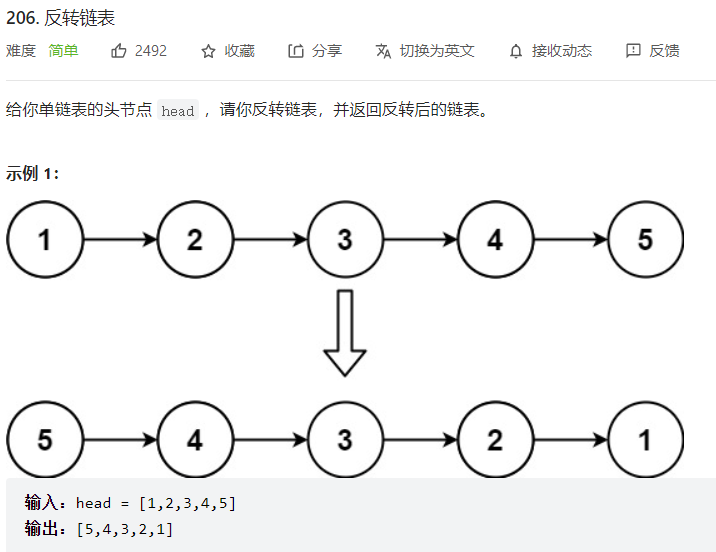前言
正文
一、反转链表
1. 题目

2. 解答
a. 迭代法:
答案/**
* Definition for singly-linked list.
* struct ListNode {
* int val;
* ListNode *next;
* ListNode() : val(0), next(nullptr) {}
* ListNode(int x) : val(x), next(nullptr) {}
* ListNode(int x, ListNode *next) : val(x), next(next) {}
* };
*/
class Solution {
public:
ListNode* reverseList(ListNode* head) {
if (head==nullptr||head->next==nullptr)
return head;
ListNode* node = head;
ListNode* next = nullptr;
ListNode* pre = nullptr;
ListNode* newHead = nullptr;//1. 比较标准的迭代四件套
while(node)
{
next = node->next;//2. 获取下一个节点
node->next = pre;//3. 直接先进行反转
pre = node;//4. 反转后,进行赋值
node = next;
if (node == nullptr)//5. 赋值后,进行判断
newHead = pre;
}
return newHead;
}
};
b. 递归法:
答案/**
* Definition for singly-linked list.
* struct ListNode {
* int val;
* ListNode *next;
* ListNode() : val(0), next(nullptr) {}
* ListNode(int x) : val(x), next(nullptr) {}
* ListNode(int x, ListNode *next) : val(x), next(next) {}
* };
*/
class Solution {
public:
ListNode* reverseList(ListNode* head) {
if (head == NULL || head->next == NULL)
{
return head;
}
ListNode* result = reverseList(head->next);//1. 想象成只有三个节点,result接下去的就是head->next的所有节点
head->next->next = head;//2. 将head->next 的next 指向head,这就是所谓的反转操作
head->next = NULL; //3. 而这一步则是将所有head->next
return result;
}
};
总结
待更~